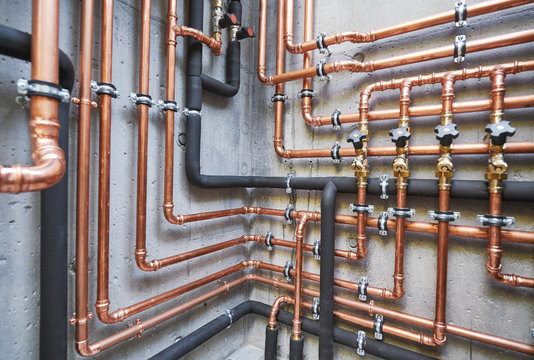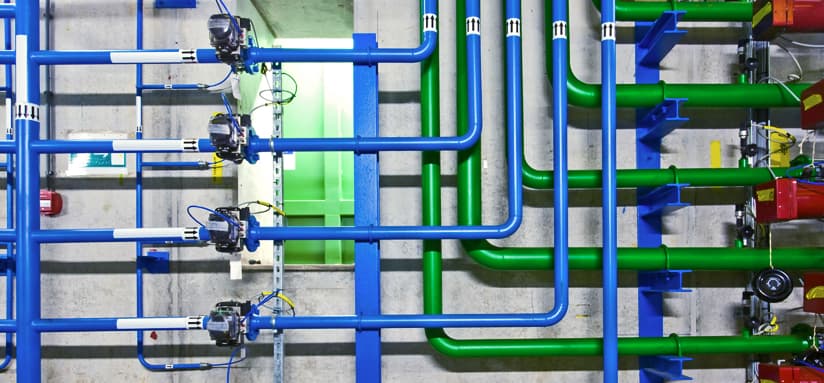The article following next relating to Understanding Your Home's Plumbing Anatomy is pretty much remarkable. Read on and make your own ideas.

Recognizing how your home's plumbing system functions is crucial for every single house owner. From providing clean water for alcohol consumption, food preparation, and bathing to safely eliminating wastewater, a well-maintained plumbing system is vital for your family's health and wellness and convenience. In this comprehensive guide, we'll check out the detailed network that makes up your home's plumbing and deal pointers on upkeep, upgrades, and handling common issues.
Intro
Your home's pipes system is greater than just a network of pipes; it's a complicated system that guarantees you have accessibility to tidy water and reliable wastewater removal. Understanding its parts and just how they work together can help you avoid expensive fixings and guarantee whatever runs efficiently.
Standard Elements of a Pipes System
Pipes and Tubing
At the heart of your pipes system are the pipelines and tubing that lug water throughout your home. These can be made from different materials such as copper, PVC, or PEX, each with its benefits in regards to durability and cost-effectiveness.
Fixtures: Sinks, Toilets, Showers, etc.
Components like sinks, bathrooms, showers, and tubs are where water is used in your home. Understanding how these components attach to the plumbing system aids in diagnosing issues and preparing upgrades.
Valves and Shut-off Points
Shutoffs control the flow of water in your pipes system. Shut-off shutoffs are vital during emergencies or when you require to make fixings, permitting you to separate parts of the system without interfering with water circulation to the entire house.
Water System System
Main Water Line
The main water line connects your home to the community water system or a personal well. It's where water enters your home and is distributed to different fixtures.
Water Meter and Pressure Regulator
The water meter steps your water usage, while a stress regulator makes certain that water flows at a safe pressure throughout your home's pipes system, preventing damage to pipelines and fixtures.
Cold Water vs. Hot Water Lines
Understanding the distinction in between cold water lines, which supply water straight from the primary, and warm water lines, which carry warmed water from the water heater, helps in repairing and planning for upgrades.
Drainage System
Drain Pipes Water Lines and Traps
Drain pipes carry wastewater away from sinks, showers, and toilets to the sewage system or sewage-disposal tank. Catches avoid sewage system gases from entering your home and likewise catch debris that might cause blockages.
Air flow Pipes
Air flow pipes allow air into the water drainage system, avoiding suction that might slow drain and cause traps to vacant. Proper ventilation is vital for maintaining the stability of your pipes system.
Value of Proper Drainage
Making certain appropriate water drainage protects against backups and water damages. On a regular basis cleansing drains and keeping catches can stop costly repairs and expand the life of your plumbing system.
Water Heating Unit
Types of Water Heaters
Water heaters can be tankless or standard tank-style. Tankless heating units heat water as needed, while storage tanks keep warmed water for immediate usage.
Updating Your Plumbing System
Factors for Upgrading
Updating to water-efficient fixtures or replacing old pipelines can boost water quality, decrease water bills, and boost the value of your home.
Modern Plumbing Technologies and Their Advantages
Explore modern technologies like wise leakage detectors, water-saving commodes, and energy-efficient water heaters that can save cash and lower ecological impact.
Expense Considerations and ROI
Calculate the in advance prices versus lasting savings when considering plumbing upgrades. Lots of upgrades pay for themselves with lowered utility expenses and less repair work.
Just How Water Heaters Link to the Plumbing System
Recognizing how water heaters connect to both the cold water supply and hot water distribution lines helps in identifying problems like inadequate hot water or leaks.
Maintenance Tips for Water Heaters
Frequently purging your hot water heater to eliminate debris, checking the temperature settings, and evaluating for leakages can expand its life-span and improve power performance.
Common Plumbing Problems
Leakages and Their Causes
Leaks can happen due to aging pipes, loosened installations, or high water stress. Addressing leaks quickly prevents water damage and mold growth.
Clogs and Clogs
Blockages in drains pipes and toilets are frequently caused by flushing non-flushable products or a build-up of grease and hair. Utilizing drain displays and bearing in mind what drops your drains pipes can avoid blockages.
Indicators of Plumbing Problems to Look For
Low water pressure, slow-moving drains, foul odors, or abnormally high water expenses are indicators of prospective pipes problems that ought to be addressed promptly.
Plumbing Maintenance Tips
Routine Inspections and Checks
Arrange yearly plumbing evaluations to capture problems early. Seek signs of leakages, deterioration, or mineral accumulation in faucets and showerheads.
DIY Maintenance Tasks
Simple tasks like cleaning tap aerators, checking for toilet leakages utilizing dye tablets, or insulating subjected pipelines in chilly climates can avoid major pipes concerns.
When to Call a Specialist Plumber
Know when a pipes concern needs expert competence. Trying complicated repair work without appropriate understanding can result in even more damage and greater repair expenses.
Tips for Reducing Water Usage
Basic habits like repairing leaks immediately, taking much shorter showers, and running full lots of laundry and recipes can conserve water and reduced your energy costs.
Eco-Friendly Plumbing Options
Consider lasting pipes materials like bamboo for flooring, which is durable and green, or recycled glass for countertops.
Emergency situation Readiness
Steps to Take During a Pipes Emergency situation
Know where your shut-off shutoffs lie and just how to turn off the supply of water in case of a burst pipe or significant leakage.
Value of Having Emergency Get In Touches With Handy
Maintain call details for regional plumbing professionals or emergency solutions conveniently offered for quick reaction during a pipes dilemma.
Environmental Influence and Conservation
Water-Saving Components and Devices
Setting up low-flow taps, showerheads, and commodes can substantially decrease water usage without sacrificing efficiency.
DIY Emergency Situation Fixes (When Relevant).
Momentary repairs like using duct tape to spot a dripping pipeline or putting a bucket under a dripping tap can minimize damage up until a specialist plumbing technician gets here.
Final thought.
Recognizing the composition of your home's pipes system encourages you to preserve it properly, conserving money and time on repair services. By complying with routine maintenance routines and remaining informed concerning modern-day pipes innovations, you can ensure your plumbing system runs successfully for several years to find.
HOW YOUR PLUMBING SYSTEM WORKS
Which Pipes Do What?
Blue lines = fresh water supply entering the building Red lines = hot water supply entering the building Grey lines = pipes carrying waste away from the building and venting pipes carrying gases away from the building (through the roof) YOUR MAIN PLUMBING SYSTEMS
There are two main plumbing systems that support your home s basic plumbing needs one that brings clean water into your home, and one that sends dirty water away from your home. Connected to the toilet, bath, shower, and other faucets in your home, these two systems keep your water flowing in the right directions.
ACCESSING FRESH WATER
Fresh and clean water is brought into your home through the main water supply line . Filtered through one pipe, this water is pressured to flow into the various fixtures in your home at any given time.
This water can be sourced from a well located on your property, a pond or river (mostly cottages), or, as in most cases, from the city s municipal water treatment centre. However, it is important to note that water that is untreated, such as the water siphoned from ponds or rivers, may not be safe to drink. Personal water supplies always need to be treated for hardness and contaminants before consumed.
MUNICIPAL WATER SUPPLIES
Improve taste and odour Remove sediment Eliminate hardness Reduce chlorine COLD WATER SUPPLY VS. HOT WATER SUPPLY
Cold water flows into your home or building through the service line, which then distributes hot or cold water to your fixtures. This line is most commonly run through a central column that runs floor to floor. Hot water runs in short and straight pipes as the longer the pipeline, the more heat that will be lost in the transfer. Having shorter pipes also allows residents to access hot water more quickly.
WASTE WATER SYSTEM
Your wastewater system is divided into two parts pipes that send wastewater away from your home and venting pipes that send sewer gas away from your home. Sewage water travels through pipes that flush the water and waste towards local sewers that are operated and managed by your city or town. Most sewer systems rely on gravity to move the wastewater to where it needs to go.
The further away from your toilet or sink, the larger wastewater pipes become. This allows for waste to be disposed of from various parts of your home or business at once without pipe blockages. The angle and flow of these pipes are also essential for keeping your waste pipes clear of build up.
https://harrisplumbing.ca/how-your-home-plumbing-system-works/

Do you appreciate reading about Anatomy of a House: Understanding the Components? Create feedback directly below. We would be happy to listen to your thoughts about this page. Hoping that you come back again later on. If you please take the time to distribute this blog if you liked it. We value reading our article about .
Call Us Now